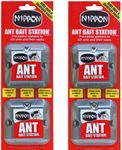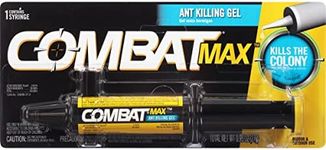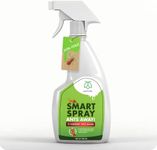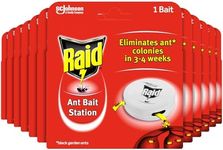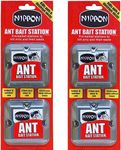Buying Guide for the Best Ant Killers
Choosing the right ant killer involves understanding the type of ant problem you have and selecting a product that effectively addresses it. Ant killers come in various forms, such as baits, sprays, and granules, each designed for specific situations. It's important to consider the environment where you'll be using the product, whether indoors or outdoors, and any safety concerns, especially if you have pets or children. By understanding the key specifications of ant killers, you can make an informed decision that effectively eliminates your ant problem while ensuring safety and convenience.Type of Ant KillerThe type of ant killer refers to the form in which the product is available, such as baits, sprays, or granules. This is important because different types are suited for different situations. Baits are effective for long-term control as they attract ants to carry poison back to the colony. Sprays are useful for immediate action and killing visible ants on contact. Granules are often used outdoors to create a barrier around your home. To choose the right type, consider where the ants are located and whether you need immediate results or long-term control.
Active IngredientsActive ingredients are the chemicals in the ant killer that target and eliminate ants. This is crucial because different ingredients work in different ways and may be more effective against certain types of ants. Common active ingredients include borax, fipronil, and hydramethylnon. Borax is often used in baits and is effective for long-term control. Fipronil is a fast-acting ingredient found in many sprays. When choosing an ant killer, consider the type of ants you are dealing with and any safety concerns, especially if you have pets or children.
Indoor vs. Outdoor UseThis specification indicates whether the ant killer is designed for use inside the home, outside, or both. It's important because using the wrong product in the wrong environment can be ineffective or even hazardous. Indoor products are formulated to be safe for use around people and pets, while outdoor products are designed to withstand weather conditions. To choose the right one, assess where the ant problem is most prevalent and ensure the product is suitable for that environment.
Safety and Environmental ImpactSafety and environmental impact refer to how the ant killer affects humans, pets, and the environment. This is important because some products can be toxic or harmful if not used properly. Look for products that are labeled as safe for use around pets and children if applicable. Additionally, consider the environmental impact, especially if using outdoors, to avoid harming beneficial insects or contaminating water sources. Choose a product that balances effectiveness with safety and environmental considerations.
Ease of UseEase of use refers to how simple and convenient the ant killer is to apply. This is important because a product that is difficult to use may not be applied correctly, reducing its effectiveness. Some products come in ready-to-use forms, while others may require mixing or special application tools. Consider your comfort level with applying the product and choose one that you can use confidently and correctly to ensure the best results.



